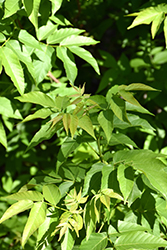It's all about ...
plants

Height: 30 feet
Spread: 20 feet
Sunlight:
![]()
![]()
Hardiness Zone: 8a
Other Names: Monillo, Spanish Buckeye, Canyon Buckeye
Description:
A beautiful, large deciduous shrub or small tree, featuring clusters of bright pink, fragrant flowers before or with the leaves in spring; pinnate green foliage turns golden-yellow in fall; a perfect landscape accent for spring and fall color
Ornamental Features
Mexican Buckeye is clothed in stunning clusters of fragrant pink flowers with lavender overtones along the branches from early to mid spring before the leaves. The flowers are excellent for cutting. It has attractive light green deciduous foliage which emerges coppery-bronze in spring. The textured pointy pinnately compound leaves are highly ornamental and turn outstanding shades of gold and yellow in the fall. It features abundant showy dark brown capsules from mid fall to late winter.
Landscape Attributes
Mexican Buckeye is a multi-stemmed deciduous tree with a shapely oval form. Its average texture blends into the landscape, but can be balanced by one or two finer or coarser trees or shrubs for an effective composition.
This tree will require occasional maintenance and upkeep, and should only be pruned after flowering to avoid removing any of the current season's flowers. Gardeners should be aware of the following characteristic(s) that may warrant special consideration;
- Spreading
- Self-Seeding
Mexican Buckeye is recommended for the following landscape applications;
- Accent
- Shade
- Hedges/Screening
- General Garden Use
Planting & Growing
Mexican Buckeye will grow to be about 30 feet tall at maturity, with a spread of 20 feet. It has a low canopy with a typical clearance of 3 feet from the ground, and is suitable for planting under power lines. It grows at a medium rate, and under ideal conditions can be expected to live for approximately 30 years.
This tree does best in full sun to partial shade. It is very adaptable to both dry and moist growing conditions, but will not tolerate any standing water. It is considered to be drought-tolerant, and thus makes an ideal choice for xeriscaping or the moisture-conserving landscape. It is not particular as to soil type or pH. It is somewhat tolerant of urban pollution. This species is native to parts of North America, and parts of it are known to be toxic to humans and animals, so care should be exercised in planting it around children and pets.
This plant is not reliably hardy in our region, and certain restrictions may apply; contact the store for more information.
